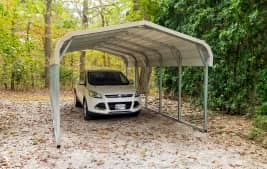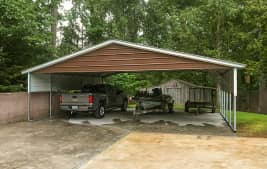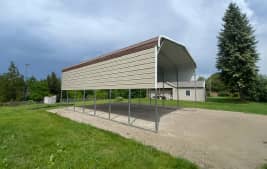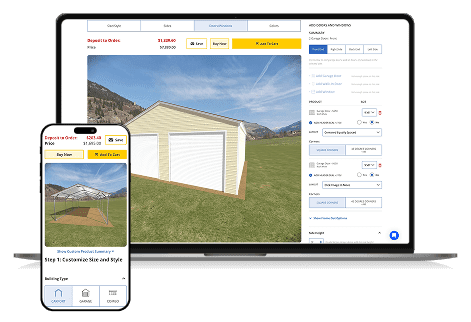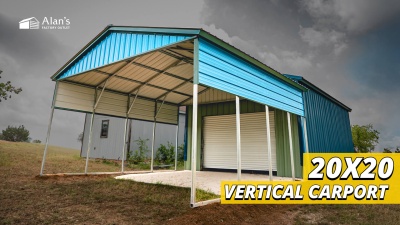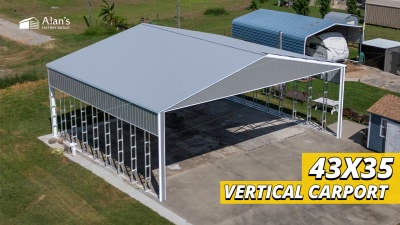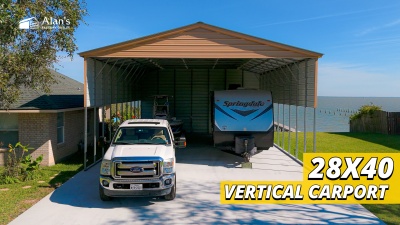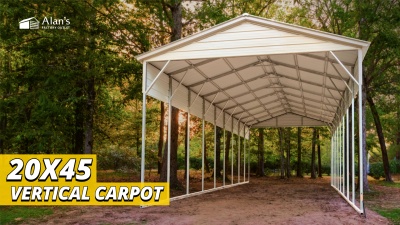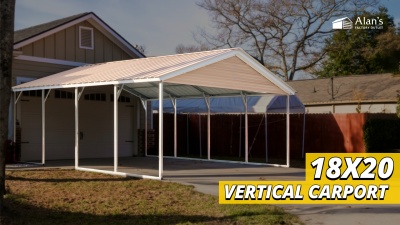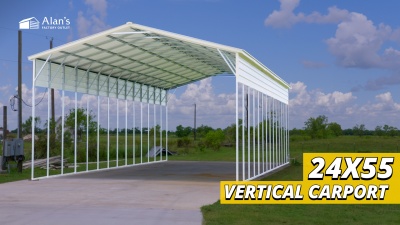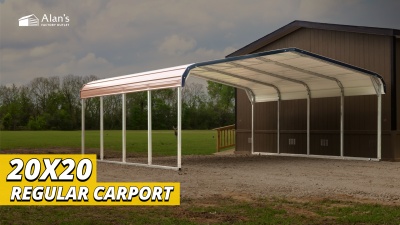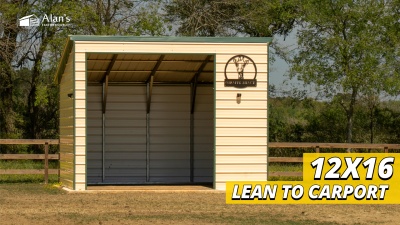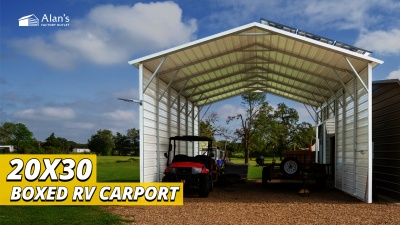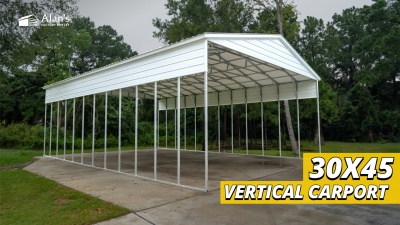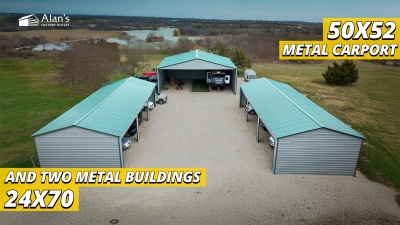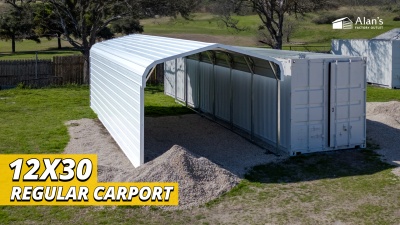Texas Metal Carports
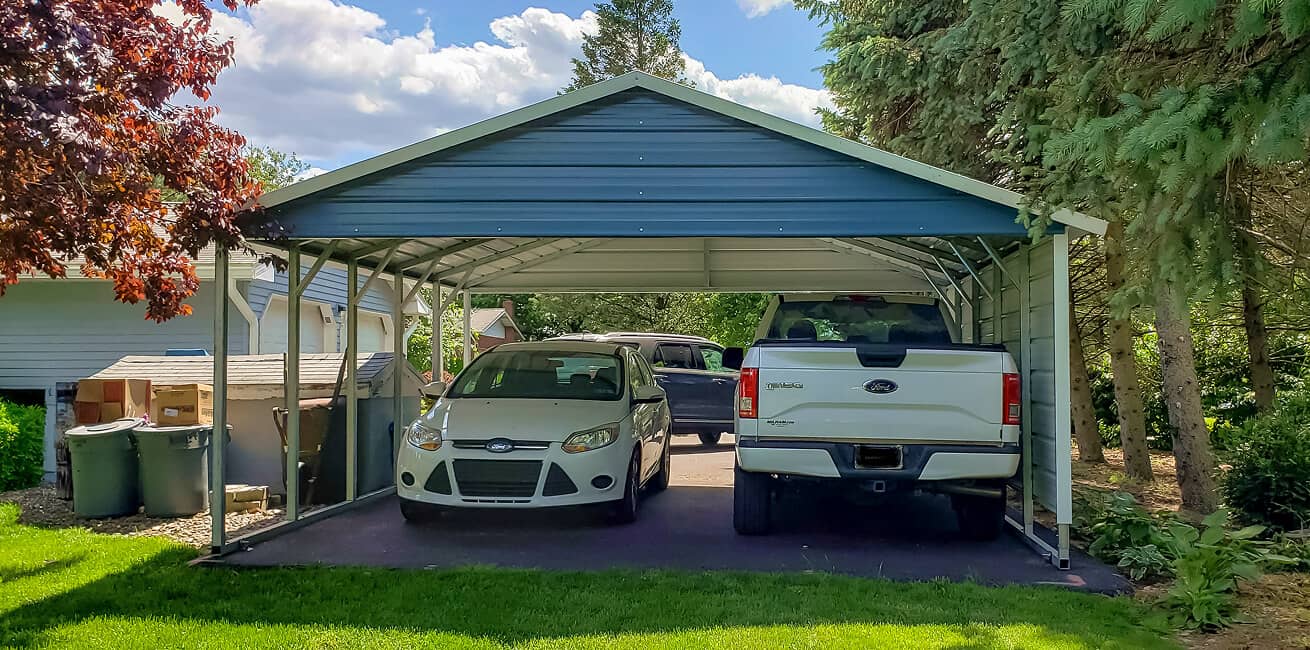
4.8 Rating (22.6k Reviews)
Alan’s Factory Outlet is one of the top metal carport sellers in Texas. With our 3D Carport Builder, you can easily design your own carport and instantly see how much it will cost.
Get a Custom Metal Carport at Unbeatable Factory-Direct Prices
Instant Transparent Pricing
At Alan’s, we have nothing to hide. Get instant pricing on metal carports online. No contact details required. No unwanted sales calls.
Fast Delivery and Installation
Alan’s Factory Outlet metal buildings and carports are delivered and installed saving you time. Delivery and installation is free.
Certified Metal Carports
Get a 1-year craftsmanship warranty plus a 20-year rust-through warranty on optional 12-gauge framing and most roof panels.
Risk-Free Guarantee
We guarantee a 100% refund of your deposit until the day your steel carport is delivered. We don’t know anyone who will match our guarantee.
Affordable Metal Carports for Texas
Starting at Just $1,295
Alan’s Factory Outlet carports are built to protect your vehicles from Texas’ intense heat and storms, offering durable, year-round coverage.
Get an Instant Quote for Your Custom Carport
Choose your size, style, and roof — get a real-time estimate right away.
Do You Install Metal Carports Near Me?
Alan’s Factory Outlet serves all major cities and rural areas in Texas.
- Abilene
- Allen
- Amarillo
- Arlington
- Austin
- Beaumont
- Brownsville
- Carrollton
- College Station
- Corpus Christi
- Dallas
- Denton
- El Paso
- Fort Worth
- Frisco
- Garland
- Grand Prairie
- Irving
- Killeen
- Laredo
- League City
- Lewisville
- Lubbock
- McAllen
- McKinney
- Mesquite City
- Midland
- Odessa
- Pasadena
- Pearland
- And more
- Abilene
- Allen
- Amarillo
- Arlington
- Austin
- Beaumont
- Brownsville
- Carrollton
- College Station
- Corpus Christi
- Dallas
- Denton
- El Paso
- Fort Worth
- Frisco
- Garland
- Grand Prairie
- Irving
- Killeen
- Laredo
- League City
- Lewisville
- Lubbock
- McAllen
- McKinney
- Mesquite City
- Midland
- Odessa
- Pasadena
- Pearland
- And more
The main area we can’t deliver to is the southern Big Bend area around Terlingua.
The main area we can’t deliver to is the southern Big Bend area around Terlingua.
Custom Metal Carports in Texas: Free Delivery and Installation Statewide
When you purchase a metal carport in Texas from Alan’s Factory Outlet, you receive free delivery and professional installation. Our carports are not only affordable but also fully customizable and built to last. Whether you’re seeking to protect your vehicles in the Panhandle or add shade in South Texas, our carports are the perfect solution. We proudly serve cities like El Paso, Austin, Abilene, San Antonio, and throughout the Lone Star State.
What sets us apart is the wide variety of options we offer. Whether you need a carport tall enough for an RV, wide enough for your farm equipment, or designed to match the color and style of your home, we’ve got you covered. You can customize every detail to fit your exact needs.
Order online today, or give our expert team a call to explore your options. We’re here to help and look forward to serving you!
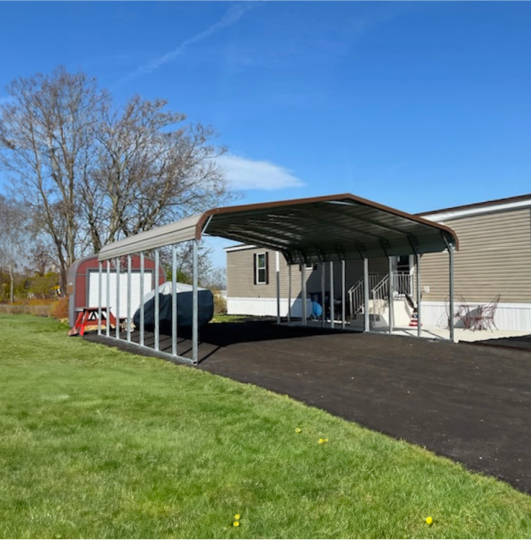
Choose from three roof styles
Regular, boxed eave, or vertical. We recommend the vertical roof style for its ability to allow snow to slide off easily.
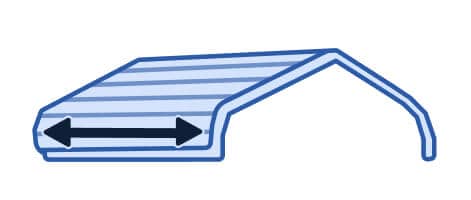
Regular Roof Carport
The regular roof style has a bow that gives it a unique shape
- Barn-shaped
- Rounded design
- Most cost-effective option
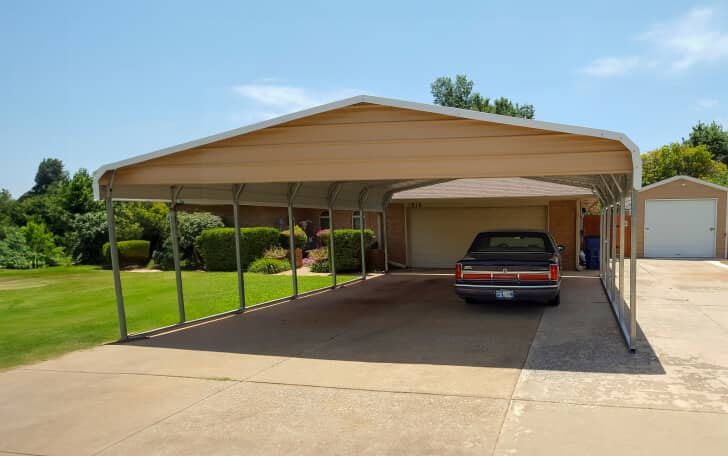
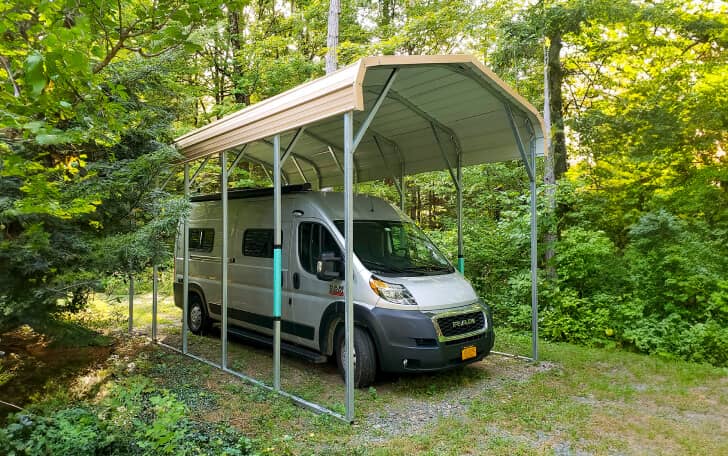
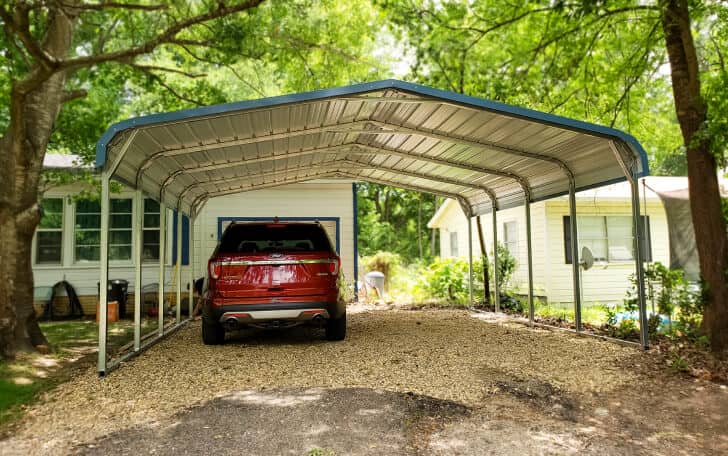
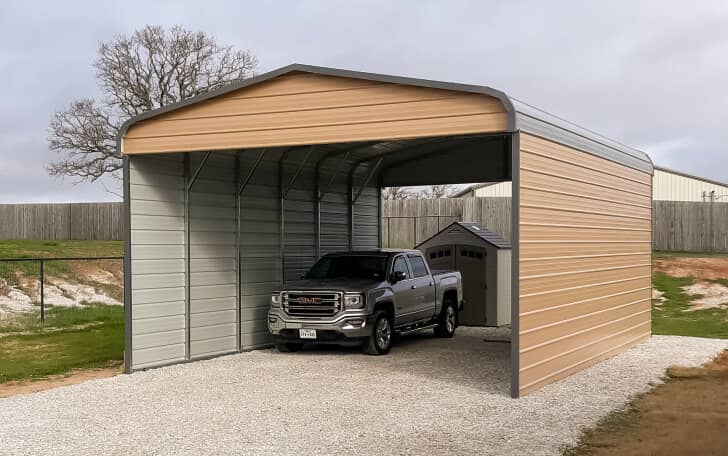

Boxed Eave Roof Carport
This A-frame roof style has panels that run from front to back
- Similar aesthetic to vertical roofs
- Has horizontally aligned panels

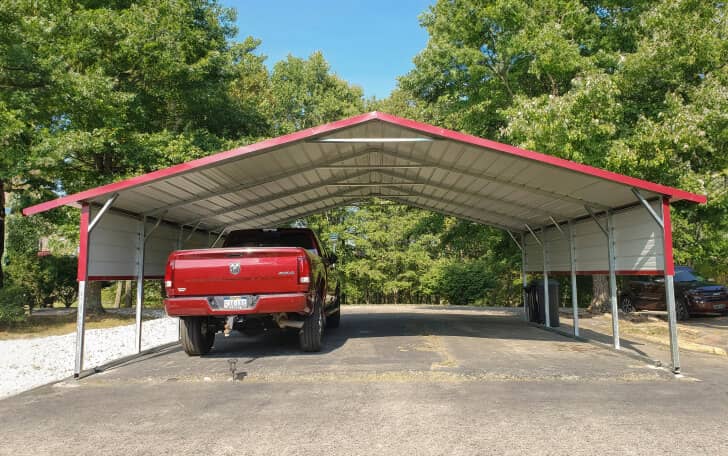
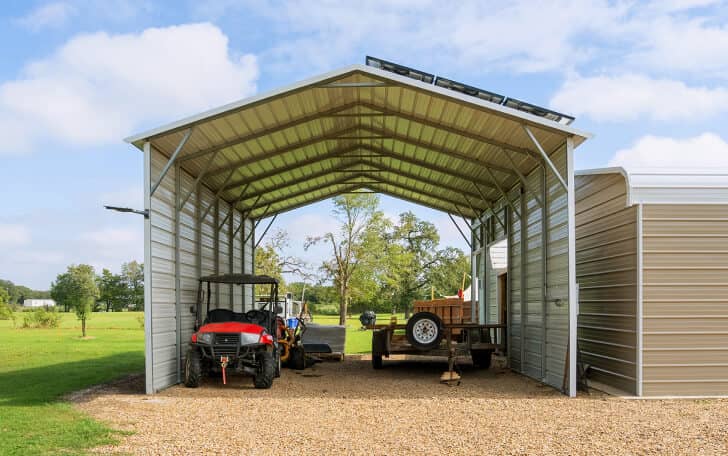
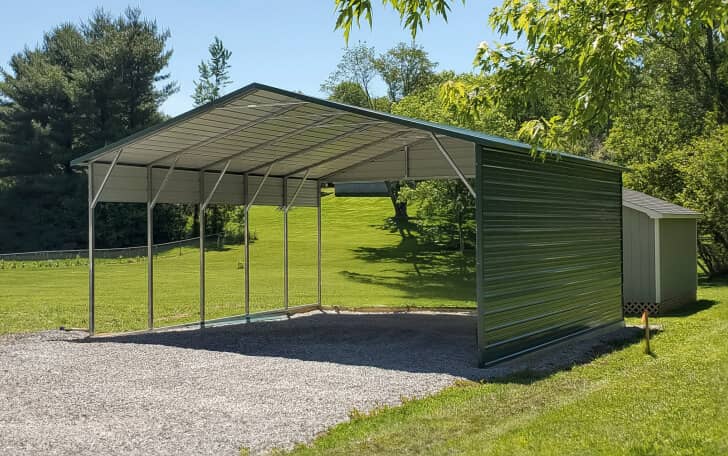

Vertical Roof Carport
The vertical roof style is the strongest roof style available
- Vertical sheeting allows rain and snow to slide off easily
- Ideal for structures over 40 feet to prevent leaks
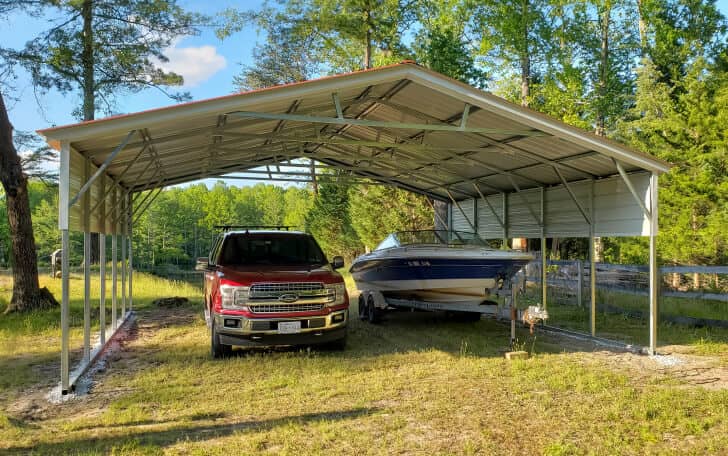

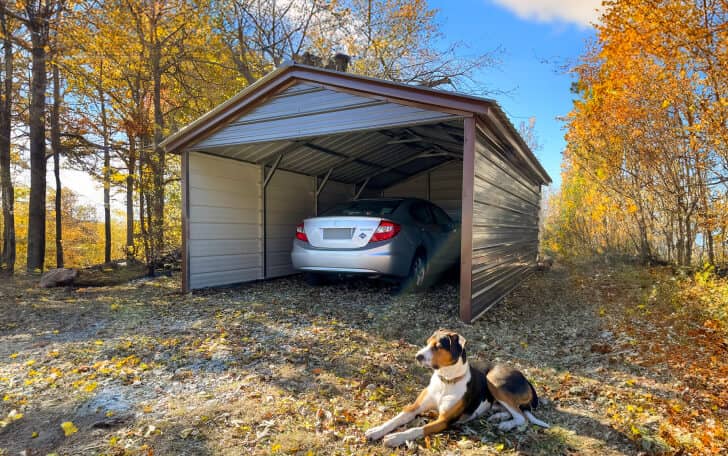
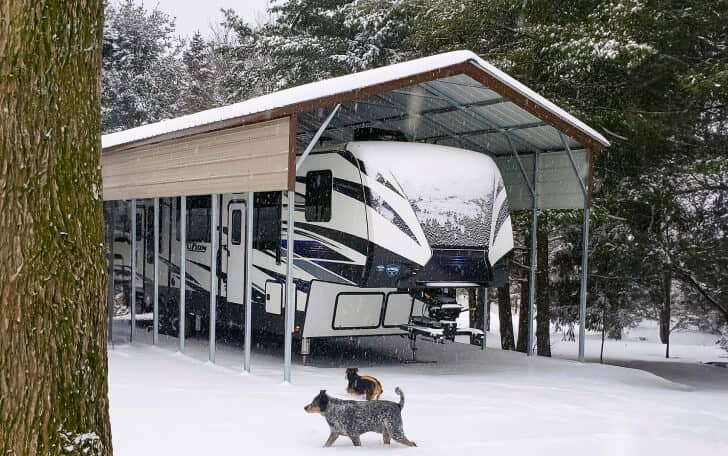
How Tall Should Your Metal Carport Be?
It’s important to know the different carport heights to ensure your vehicles and items will fit comfortably.
Roof Center Brace Clearance & Peak Height
Select your carport or garage preferences to see the center clearance and peak height.
Learn more about height clearance and building heights on our Height Clearance Calculator page.
Preparing a Space for Your Prefab Carport
Before we deliver your new carport, set up either a level gravel pad or a concrete pad
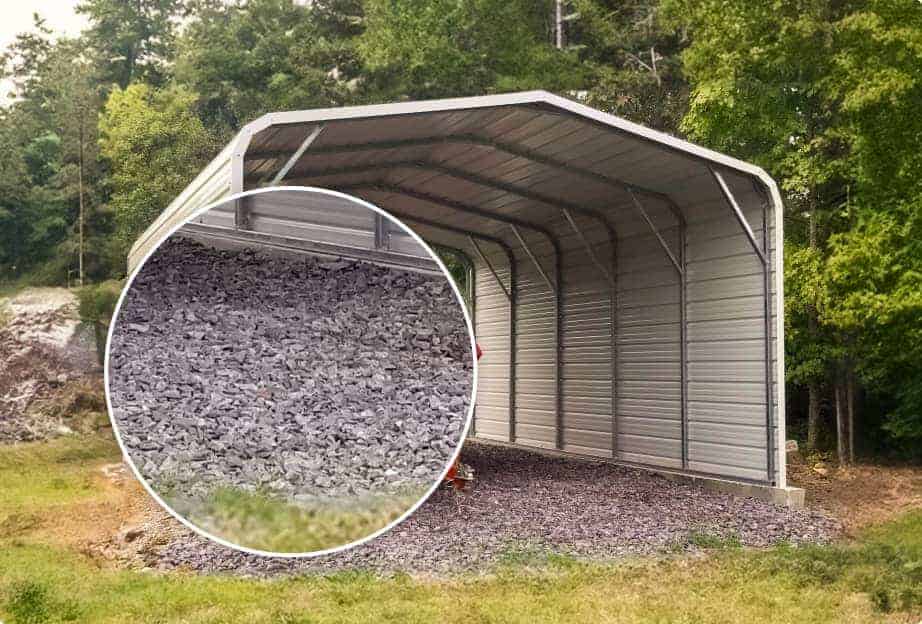
For gravel pad
We recommend your gravel pad to be 2 feet longer and 2 feet wider than your carport size.
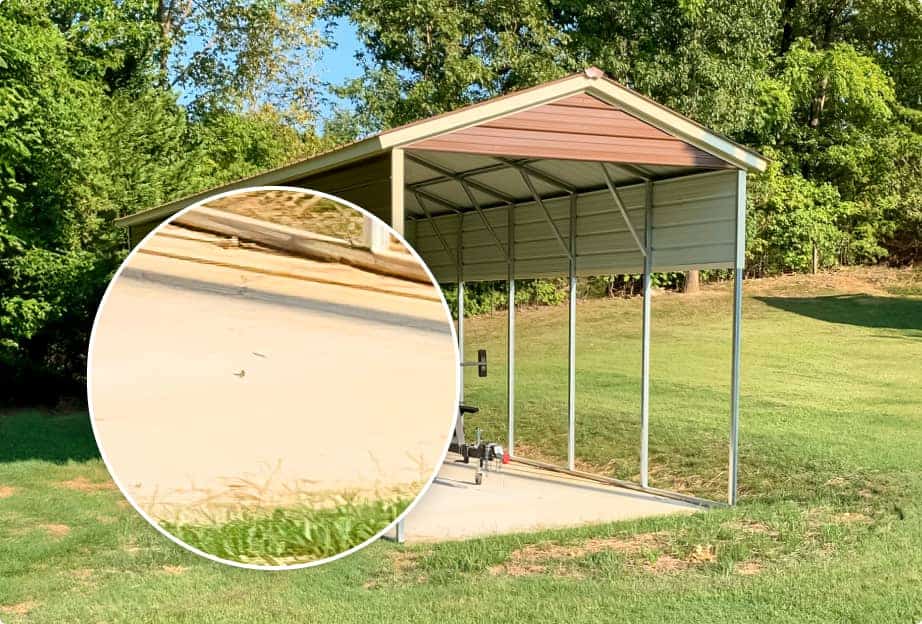
For concrete pad
Typically, we recommend your concrete pad to be at least 1 foot longer and 1 foot wider than your carport size. Use our concrete pad calculator to confirm your pad size.
Learn more about Concrete Pads on our Concrete Pad Size Calculator page.
Alan’s Factory Outlet Reviews
Alan’s Factory Outlet is a legitimate business with an A+ rating from the BBB.

Why Shop Alan’s Factory Outlet for Metal Carports?
Do you have a general question?
Get quick answers to common questions in our Help Center, an extensive knowledge base available 24/7.
Do you need something specific?
Please fill out the form on this page, or call us at 1-800-488-6903 (M-F, 8-6 Eastern).
